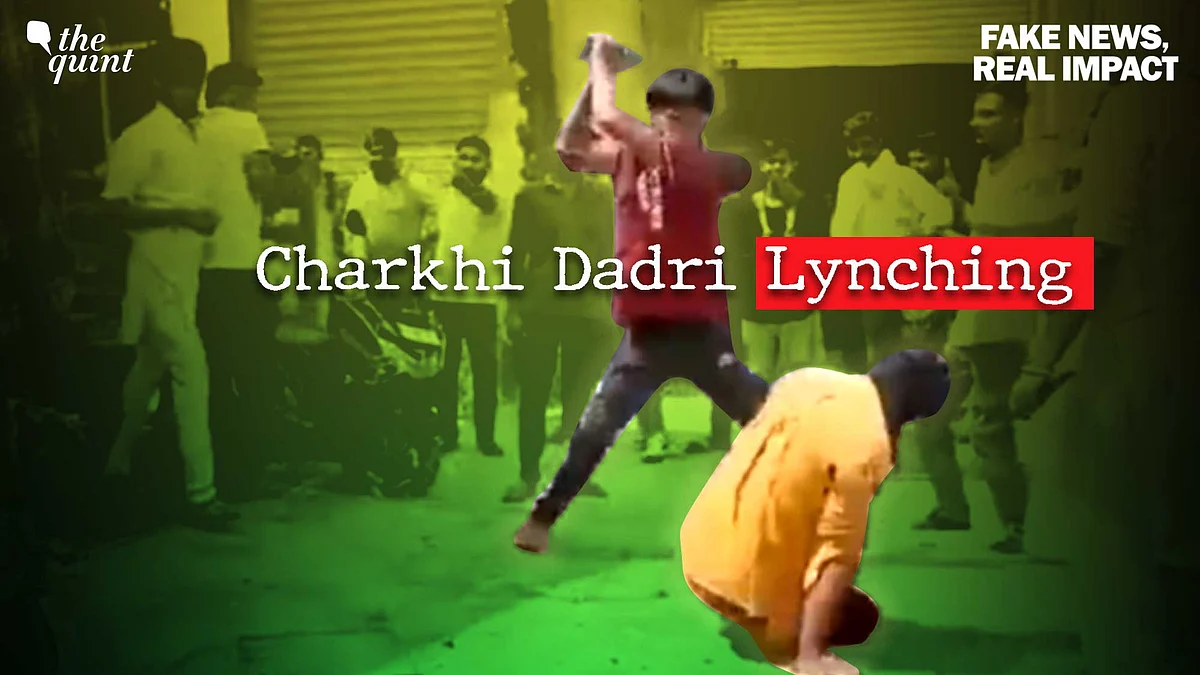Charkhi Dadri Lynching: How Rumours of Cow Slaughter Cost Sabir His Life
Watch our report to find how rumours led to the death of a migrant worker from West Bengal.

advertisement
In 2015, a murder under the guise of cow protection came to light. Akhlaq was brutally murdered and his family still awaits justice. The case is soon going to be a decade old; however, similar incidents of violence based on rumours are still prevalent today.
A major reason behind these incidents is the spread of rumours and hate-filled content regarding cow slaughter on social media platforms. The Centre for the Study of Organised Hate (CSOH) analysed around 1023 Instagram handles who claimed to be cow protectors.
It was found that 30 percent of the content showed violence against Muslims involved in the cattle trade. These types of content, shared through 121 reels, have been viewed nearly 8.5 million times.
From Dadri in Uttar Pradesh to Haryana's Charkhi Dadri, the list of incidents of violence under the name of cow protection is long.
April 2024: In Haryana's Sonipat, a Sikh truck driver was stopped on suspicion of cow slaughter and was mistreated.
August 2024: A man named Aryan Mishra, who was travelling by a car in Faridabad, was murdered on the suspicion of cow slaughter.
August 2024: A migrant worker from West Bengal named Sabir Malik was killed in Hansawas Khurd village in Charkhi Dadri due to rumours of cow slaughter.
November 2024: Two Muslim drivers transporting cattle were caught by cow protectors in Ambala's Mohra and were verbally abused and mistreated.
December 2024: In Haryana's Nuh, a man named Arman Khan, who was transporting cattle, was caught, beaten, forced to do sit-ups, and a video of the incident was shared on the internet.
The number of these cases are increasing. In this situation, the question arises that:
What Is Cow Protection?
It clearly means to protect cows. However, when a mob takes the law into its own hands, the meaning of "cow protection" begins to change. This is especially true for states like Haryana, where the government has legally recognised cow protectors.
Moreover, the state's chief minister had also directed officials to consider implementing a system to reward cow protectors.
In Haryana's Charkhi Dadri, many migrant workers from West Bengal and Assam come in search of employment. Most of them are from the Dalit and Muslim community.
One such person from Bengal was Sabir, who used to sell scrap for living in Hansawas Khurd village in Charkhi Dadri. A mob claiming to be cow protectors arrived at Sabir's house on 27 August 2024, alleging cow meat being cooked in his house. The food items were taken out of his house and checked.
After a while, Sabir and another migrant worker from Assam named Sirajuddin were brutally beaten. Sirajuddin was severely injured, and Sabir lost his life. Two months later, the food found at Sabir's house was tested, and the report revealed that it was not cow meat. A rumour had cost Sabir his life. The Quint's fact-checking team reached Charkhi Dadri to understand how such rumors spread, directly affecting people's lives.
Visual from 27 August showing Sabir being beaten.
(Source: Accessed by The Quint)
This is the Badhara bus stop, where Sabir was brought and beaten.
(Source: The Quint)
Who Were the Ones Spreading the Rumors?
The Quint spoke to the wife of the deceased, Shakeela. She stated that the mob that entered their home on 27 August 2024, claimed to be cow protectors. She alleged that after the murder, the police neither provided her with a copy of the FIR nor any information about the case.
The West Bengal government has now offered her a government job. She feels sad that the state government [Haryana] where her husband was murdered, showed no sympathy towards her.
After we reached the Badhara bus stop in Charkhi Dadri and tried speaking to people in the area, they refused to talk about the incident. Most of them even claimed that they had no idea any murder had taken place in the area.
Former professor and activist working to raise awareness about communal incidents, Vipin Tripathi, had visited Charkhi Dadri a week after Sabir's murder. At that time, the migrant workers from West Bengal were still residing there. He shared detailed information about the incident with us.
Activist Vipin Tripathi.
(Source: The Quint)
Sabir's family had found his body a short distance away from the Badhara bus stop.
What Was the Impact of the Rumour?
Clearly, the accusations of cow slaughter were false. But by the time the truth came out, and the lab report proved that the claim of cow meat was a lie, the damage had already been done. Not only did Sabir lose his life, but all the Muslim migrant workers living in Hansawas Khurd village were forced to leave the area.
Sabir lived in Charkhi Dadri with his wife and one-year-old daughter. Sabir's wife’s family, including his father-in-law Sujauddin, also lived there. When Sabir was being beaten, his father-in-law was taken to the police station for questioning.
On Muslim workers being forced to leave the area due to the rumours, Charkhi Dadri's SP Arsh Verma said,
In our special series, "Fake News, Real Impact," we bring you stories of people who were victims of rumours. You can support our work by becoming a member.
(Not convinced of a post or information you came across online and want it verified? Send us the details on WhatsApp at 9540511818 , or e-mail it to us at webqoof@thequint.com and we'll fact-check it for you. You can also read all our fact-checked stories here.)